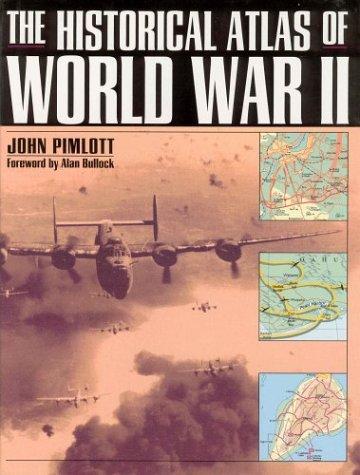Hardcover, 224 pages
English language
Published June 1, 1995 by Henry Holt and Company.

Hardcover, 224 pages
English language
Published June 1, 1995 by Henry Holt and Company.
The Second World War was the largest event in human history. During its course an estimated fifty million people perished, and even today the scale of the mobilization it generated--involving human, financial, and industrial resources--is almost unimaginable. Millions across the globe fled war zones to be replaced by soldiers of all creeds and backgrounds.
The recent opening of archives in Washington, London, and Moscow has thrown new light on certain events of the war--revealing, for example, just how close the Allies came to defeat in 1942 when the Axis armies were in ascendancy everywhere. Equally amazing was the growth of economic activity. The U.S. economy alone grew by 50 percent in five years, producing millions of weapons: an aircraft carrier every two weeks, a tank every forty minutes, a rifle every twenty-four seconds.
Between September 1939 and September 1945 the world changed completely and forever. The technological revolution, which effected …
The Second World War was the largest event in human history. During its course an estimated fifty million people perished, and even today the scale of the mobilization it generated--involving human, financial, and industrial resources--is almost unimaginable. Millions across the globe fled war zones to be replaced by soldiers of all creeds and backgrounds.
The recent opening of archives in Washington, London, and Moscow has thrown new light on certain events of the war--revealing, for example, just how close the Allies came to defeat in 1942 when the Axis armies were in ascendancy everywhere. Equally amazing was the growth of economic activity. The U.S. economy alone grew by 50 percent in five years, producing millions of weapons: an aircraft carrier every two weeks, a tank every forty minutes, a rifle every twenty-four seconds.
Between September 1939 and September 1945 the world changed completely and forever. The technological revolution, which effected the progression from 200 mph aircraft used to defend Warsaw to the nuclear bomber sent to obliterate Hiroshima, was matched by the political unheaval. Ancient empires collapsed and were replaced by superpowers that would dominate the world for more than forty years. The legacy of the Second World is still with us today.
The Historical Atlas of World War II chronicles both the major and minor campaigns of the war in Europe, Africa, the Middle East, Asia, and the Pacific. It also provides the political, economic, and social background needed for a full understanding of the war. Consisting of more than one hundred specially commissioned full-color maps providing even greater detail, more than one hundred captioned color and black-and-white photographs, and an authoritative text by two leading military historians, this atlas is destined to become the definitive historical reference of the twentieth century's most tumultuous event.